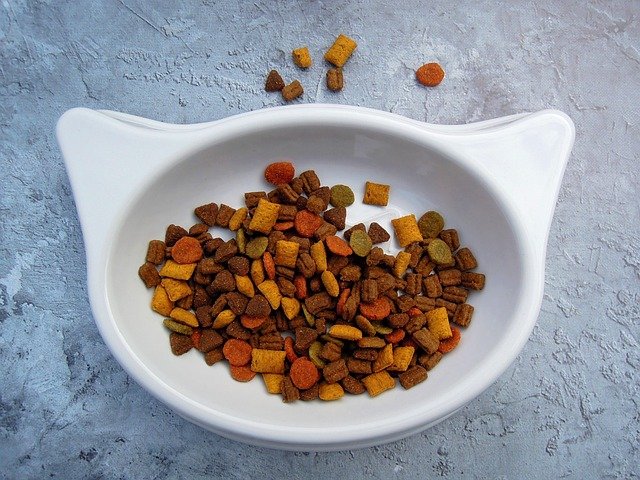The Ultimate Guide to Choosing the Best Dog Food
Dog food is a crucial aspect of your pet's health and well-being. As a responsible pet owner, it's essential to understand the various options available and how to select the best nutrition for your furry friend. This comprehensive guide will explore the world of dog food, covering important factors to consider when making your choice.

-
Wet food: Canned or pouched wet food has a higher moisture content, making it an excellent choice for dogs who need to increase their water intake. It’s also more palatable for picky eaters.
-
Semi-moist food: This type of food has a texture between dry and wet food. While it’s convenient, it often contains more preservatives and artificial ingredients.
-
Raw diet: Some pet owners opt for a raw food diet, which typically consists of uncooked meat, bones, fruits, and vegetables. However, this approach requires careful planning and preparation to ensure nutritional balance and safety.
-
Home-cooked meals: Preparing your dog’s food at home allows you to control the ingredients, but it’s essential to consult with a veterinary nutritionist to ensure a balanced diet.
How do I determine my dog’s nutritional needs?
Understanding your dog’s nutritional requirements is crucial for selecting the right food. Several factors influence these needs:
-
Age: Puppies, adult dogs, and senior dogs have different nutritional requirements. Puppy food is formulated to support growth, while senior dog food often contains ingredients to support joint health and cognitive function.
-
Size and breed: Large breed dogs may benefit from food designed to support joint health, while small breeds may require smaller kibble sizes.
-
Activity level: Working dogs or those who exercise frequently may need higher calorie intake compared to less active pets.
-
Health conditions: Dogs with specific health issues may require specialized diets. For example, dogs with kidney problems might need a low-protein diet.
-
Allergies or sensitivities: Some dogs may have food allergies or sensitivities that require special diets or limited ingredient formulas.
Consult with your veterinarian to determine the best nutritional plan for your dog based on these factors.
What ingredients should I look for in quality dog food?
When evaluating dog food options, pay attention to the ingredient list. High-quality dog food should contain:
-
A named animal protein source as the first ingredient (e.g., chicken, beef, lamb)
-
Whole grains or vegetables for carbohydrates and fiber
-
Essential fatty acids for skin and coat health
-
Vitamins and minerals for overall health
-
No artificial preservatives, colors, or flavors
Avoid foods that list generic “meat” or “animal” by-products as primary ingredients, as these may be of lower quality. Also, be cautious of foods with excessive fillers like corn or wheat gluten, which provide little nutritional value.
How can I transition my dog to a new food?
When changing your dog’s diet, it’s important to do so gradually to avoid digestive upset. Here’s a recommended transition schedule:
-
Days 1-3: 75% old food, 25% new food
-
Days 4-6: 50% old food, 50% new food
-
Days 7-9: 25% old food, 75% new food
-
Day 10 and beyond: 100% new food
Monitor your dog’s reaction to the new food during this transition period. If you notice any signs of digestive distress, slow down the transition process or consult your veterinarian.
What are some common dog food myths to avoid?
There are several misconceptions about dog nutrition that pet owners should be aware of:
-
“All grain-free diets are better”: While some dogs may benefit from grain-free diets due to allergies, grains can be a valuable source of nutrients for most dogs.
-
“Raw diets are always healthier”: Raw diets can be nutritionally complete when properly balanced, but they also carry risks of bacterial contamination and nutritional imbalances if not carefully prepared.
-
“Homemade diets are always best”: While homemade diets allow for ingredient control, they can be nutritionally incomplete without proper guidance from a veterinary nutritionist.
-
“Dogs should only eat meat”: While dogs are carnivores, they benefit from a balanced diet that includes some plant-based ingredients for fiber and essential nutrients.
-
“All commercial dog foods are of poor quality”: Many reputable brands produce high-quality, nutritionally complete dog foods that meet or exceed industry standards.
By understanding these myths and focusing on your dog’s individual needs, you can make informed decisions about their nutrition.
In conclusion, choosing the right dog food is a crucial aspect of responsible pet ownership. By considering your dog’s specific needs, understanding ingredient quality, and consulting with your veterinarian, you can provide your furry friend with the nutrition they need for a healthy, happy life. Remember that every dog is unique, and what works best for one may not be ideal for another. Regular check-ups and monitoring your dog’s health and energy levels will help ensure that their diet continues to meet their needs as they grow and age.






